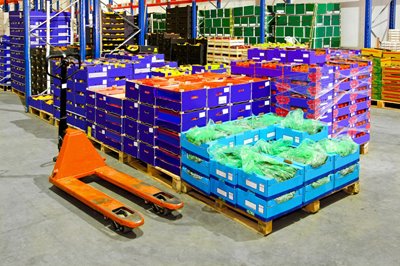
Wooden crates of food products are shipped around the world every day. In a previous post, we discussed ISPM-15 certification and the strict international regulations for the heat treated pallets and wood crates used to move these items. Recently, though, the Canadian Food Inspection Agency, or CFIA, came out with some new standards for modernizing their food inspection processes. If your company produces food or uses wooden pallets or crates to move food products, these new standards may affect your operations. Read on for a fuller explanation.
In an effort to reduce costs in some areas, the CFIA is moving the responsibility for monitoring the safety of food products and packaging away from the government and onto the companies themselves. The notion of self-monitoring in any industry would cause most people to raise a skeptical eyebrow. Isn’t that a little bit like trusting a bully to behave properly? Self-monitoring means no monitoring in the eyes of many cynics. However, the CFIA feels like self-monitoring in the food industry can actually work. Here’s why.
First of all, unlike some other industries, companies that produce food as well as wooden products have a vested interest in keeping their products safe. If unsafe products get out to the general public and cause any harm, the resulting downturn in sales can be devastating for the company of origin. Next, this isn’t the free for all that it sounds like; the CFIA still creates and maintains stringent regulations with which companies will need to comply. Finally, from an innovation standpoint, having companies responsible for safety monitoring pushes researchers to develop more efficient and cost-effective testing models.
Although Canada is the first country to try self-monitoring in the wood packaging industry, the CFIA is confident that it can work well in practice. A recent statement from the general manager of the Canadian Wood Pallet and Container Association (CWPCA) was tremendously optimistic about the new self-monitoring standards.
The Canadian Wood Packaging Certification Program (or CWPCP) greenlights producers of heat treated pallets that have met specific requirements. It’s a lengthy process that includes a facility inspection and approval of the producer’s quality management plan. While this isn’t full self-regulation, it sets a standard for pallet producers to make a quality product. Having this certification is not something that producers take lightly — it means they’re creating good wooden materials that their clients can feel good about.
HWP Herwood, the north east’s wooden pallet and crate supplier, is a proud CWCPA member that has met the high standards set forth in the CWPCP. If your company is in need of pallets or other wooden packaging materials for either domestic or international shipping, give us a call. We can fabricate a fleet that will suit your needs perfectly and keep you in full compliance with all packaging regulations.
http://canadianpallets.com/en/News-_4/A-Word-From-The-General-Manager--June-2015